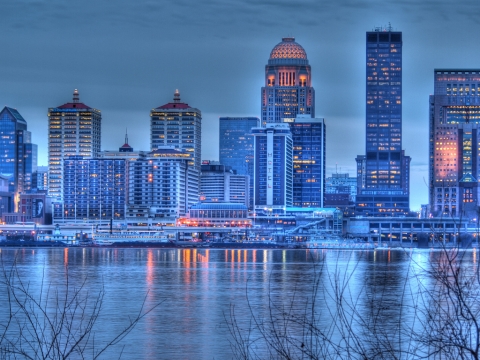CVBs Partner with Event Planners to Draw More Attendees and Exhibitors to Destinations

Trade show and meeting planners choose their destinations carefully, bringing many factors into the decision-making process. One factor is the city’s appeal as a travel destination. According to International Association of Exhibitions and Events’ (IAEE’s) Decision to Attend Study, 78 percent of attendees cite the destination as a top driver for attending a convention. It’s little surprise then, that Convention and Visitors Bureaus (CVBs) are helping planners promote the destination to their audiences.
“We’ve seen a pretty dramatic shift over the last few years in convention and event planners prioritizing a destination’s ability to attract and grow attendance,” said Zack Davis, director of marketing for the Louisville Convention and Visitors Bureau.
He continued, “With that in mind, our communications and marketing department works very closely with our services and sales departments to offer marketing support.”
Tara Letort, director of group PR at the New Orleans Convention and Visitors Bureau began helping conventions with attendance-building strategies 11 years ago when the CVB became the first to have a director-level position for this type of marketing support. The goal is to get attendees and exhibitors excited to come to a convention and more specifically, excited to come to a convention in New Orleans.
“The market is so competitive within association events that attendees must convince their bosses why they would pick one event or the other,” Letort explained. “The destination sells that and we show them what they’ll enjoy outside of the convention center floor and why New Orleans is the place to do business.”
Many trade show organizers welcome this kind of support.
“We take advantage (of marketing opportunities) whenever possible,” said Steve Mickley, executive director at the American Institute of Building Design, which runs four small annual events. “It certainly helps with our small events but I’m sure the benefit is proportionate to larger events, too.”
CVBs create customized marketing plans for each planner. The Louisville team takes a consultative approach to determine what will benefit each group.
“We offer a wide variety of marketing/promotional services for trade shows and conventions, and we’ll even develop a new service based on the specific needs of the group,” Davis explained. “When we consult with the planner, we ask about their specific goals and objectives, as well as discuss trends or challenges in their industry.”
New Orleans considers the attendee profile and then designs content for different types of dining customers or activity interests. It then ensures its efforts blend into the planner’s overall marketing campaign.
“We infuse destination marketing into their attendance promotion to make it a strategic marketing plan,” Letort said.
Tactics are comprehensive and are often implemented beginning around 18 months leading up to an event.
“With our clients, we often do activities the year prior such as attendance-building brochures, maps, a personalized sign with convention dates or a prize drawing giveaway,” Davis said.
He continued, “From there we use digital brochures and flyers, save-the-date flyers and maps that can be printed or emailed, telemarketing, personalized microsites and public relations support.”
Like Louisville, New Orleans uses promotional tactics such as microsites, public relations and social media, but it also maintains a content library that planners can use to show how easy it is to do business in the destination.
“Planners don’t have to hire a photographer for city images or videographer for B-roll – we have it and more at their fingertips,” Letort said. “For example, we have videos about how long it takes to walk from the convention center to the hotel or what restaurants are located in walking distance from a hotel or convention center.”
She continued, “We have anything they need to promote the destination…information on James Beard Award-winner chefs, the best museums, customized maps for those bringing families. And, as the event gets closer, we can reach out to local beat reporters for their industry to make sure they are covering the event.”
Often, it’s the special touches on behalf of CVBs that stand out to event planners.
“When we arrived in one city there were small welcome signs in the windows of nearly every business within walking distance of our conference venue,” said Mickley.
He continued, “There are typical things that a CVB does, like save-the-date postcards and customized websites, but I thought this particular touch was particularly impressive and I’ve not seen the idea in any other city.”
Many of the services CVBs offer are complimentary, while others are provided for a nominal fee, typically at cost. The value of these services can be both tangible and intangible, from trackable increases in attendee and exhibitor participation to greater awareness about an event, Davis added.
“Marketing is absolutely a value-added service that we offer – it’s something they don’t have to budget for,” Letort said.
She continued, “Saving their time is a big benefit that planners get from these services. They are challenged by so many other things operationally that marketing tends to suffer more than other things do.”
Now more than ever, event planners have myriad tools and resources to promote their host destinations, which can impact the growth of their events in positive ways. Harnessing the value of CVBs and their free or low-cost services is just one way to make that happen.


Add new comment